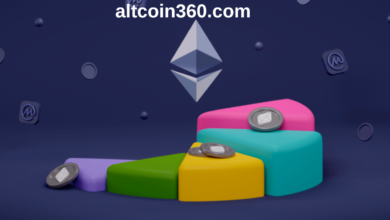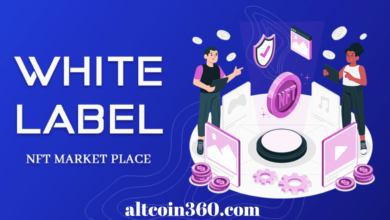How To Create Dynamic NFTs (dNFTs)?

Creating Dynamic NFTs (dNFTs) is an exciting and innovative way to breathe life into the world of non-fungible tokens. While traditional NFTs are static digital assets, dNFTs offer a dynamic and interactive experience. In this guide, we’ll explore what dNFTs are, the technology behind them, and a step-by-step process to create your own dynamic NFTs.
What Are Dynamic NFTs (dNFTs)?
Dynamic NFTs, or dNFTs, represent a step forward in the evolution of non-fungible tokens. Unlike traditional NFTs that are static digital assets, dNFTs are programmed to change or react based on various conditions. These conditions could include user interactions, real-world data, or even the passage of time. The dynamic nature of dNFTs opens up a wide range of possibilities for creators and collectors.
Technology Behind dNFTs
Creating dNFTs involves a combination of blockchain technology, smart contracts, and often external APIs or oracles to obtain real-world data. Here’s a breakdown of the key components:
- Blockchain: Just like traditional NFTs, dNFTs are typically built on blockchain platforms like Ethereum, Binance Smart Chain, or other emerging NFT-friendly chains. The blockchain provides the underlying infrastructure for the NFT and ensures its uniqueness.
- Smart Contracts: Smart contracts are self-executing agreements with the terms of the contract directly written into code. In the context of dNFTs, these contracts define the rules and conditions for how the NFT behaves. They also interact with external data sources and other contracts to trigger dynamic changes.
- Oracles and APIs: To make dNFTs truly dynamic, they often need to access external data sources. Oracles or APIs are used to feed real-world data into the smart contract, allowing it to react to changes in the external environment. For example, a weather dNFT could fetch live weather data to update its appearance.
- User Interactions: Some dNFTs respond to user interactions, such as clicking or interacting with them in some way. These interactions trigger changes in the NFT’s appearance or behavior.
Steps to Create Dynamic NFTs
Now, let’s break down the steps to create your own dynamic NFTs:
Step 1: Define the Concept
Start by conceptualizing your dNFT. What should it represent, and how will it behave? Consider whether it will react to external data, user interactions, or both. A clear concept is essential before diving into the technical aspects.
Step 2: Choose the Blockchain
Select the blockchain on which you want to create your dNFT. Ethereum is a popular choice, but other blockchains like Binance Smart Chain or Flow also support NFTs. Each blockchain has its own ecosystem, so choose the one that best fits your project’s needs.
Step 3: Develop the Smart Contract
This is a critical step. You’ll need to create a smart contract that defines the behavior of your dNFT. You can use programming languages like Solidity for Ethereum or Cadence for Flow. The contract should include logic for changing the NFT’s properties based on the defined conditions. For example, you might create a dNFT that changes color based on the stock market’s performance.
Step 4: Incorporate Oracles or APIs
If your dNFT relies on external data, you’ll need to integrate an oracle or API. Oracle platforms like Chainlink and Band Protocol can provide real-world data to your smart contract. Ensure that your smart contract is set up to query and process this data to update the NFT accordingly.
Step 5: User Interaction (Optional)
If your dNFT is designed to respond to user interactions, you’ll need to build a user interface that allows users to interact with the NFT. This might involve a website or app where users can trigger changes in the NFT’s appearance or behavior.
Step 6: Test and Deploy
Before launching your dNFT, thoroughly test it on a testnet to ensure it behaves as expected. Once you’re confident in its functionality, deploy it to the mainnet. This will make it accessible to collectors and users.
Step 7: Mint the dNFT
To create a dynamic NFT, you need to mint it. Minting is the process of generating the NFT token on the blockchain. This is where your dNFT becomes a unique, tradeable asset. Use an NFT minting platform or script to mint your dNFTs. Specify the number of copies, attributes, and any royalties you wish to receive from secondary sales.
Step 8: Market and Distribute
Once your dNFT is minted, you can market and distribute it. Promote your dNFT on social media, NFT marketplaces, and through art or tech communities. Building a community of potential collectors can be crucial to the success of your dNFT project.
Examples of Dynamic NFTs
Dynamic NFTs can take many forms. Here are some examples to spark your creativity:
- Weather Dapp: A dNFT that changes its background and mood based on the weather conditions in the user’s location, fetching data from a weather API.
- Gaming NFT: A character or item in a blockchain game that gains experience points and evolves as the player progresses through the game.
- Financial Tracker NFT: An NFT that represents a financial portfolio and dynamically updates its value based on real-time data from stock markets or cryptocurrencies.
- Interactive Art NFT: An art piece that responds to user interactions, allowing users to change colors, shapes, or other visual aspects by clicking or swiping.
- AI-Generated Art: A dNFT that uses machine learning algorithms to generate new art periodically, ensuring that the NFT is always evolving.
Challenges and Considerations
Creating dynamic NFTs can be a complex endeavor, and it’s essential to consider a few challenges
- Gas Fees: Deploying smart contracts and interacting with oracles can incur substantial gas fees on some blockchains. Consider the cost implications.
- Security: Smart contracts should be well-audited to prevent vulnerabilities and security breaches.
- Data Reliability: Ensure the reliability of external data sources, as your dNFT’s behavior relies on them.
- Legal and Copyright Issues: If your dNFT project uses copyrighted material, consider the legal implications and licensing agreements.
- Scalability: As dynamic NFTs become more popular, scalability could become an issue. Be prepared for potential network congestion and slow transaction times.
Conclusion
Dynamic NFTs represent an exciting frontier in the world of non-fungible tokens. They combine blockchain technology, smart contracts, external data sources, and user interactions to create NFTs that evolve and interact with their environment. By following the steps outlined in this guide, you can embark on your journey to create your own dynamic NFTs, offering unique and engaging experiences to collectors and users in the ever-evolving world of digital art and assets.





Hi my loved one I wish to say that this post is amazing nice written and include approximately all vital infos Id like to peer more posts like this
Live Coin Watch I’m often to blogging and i really appreciate your content. The article has actually peaks my interest. I’m going to bookmark your web site and maintain checking for brand spanking new information.
BaddieHub I really like reading through a post that can make men and women think. Also, thank you for allowing me to comment!
Your blog is a constant source of inspiration for me. Your passion for your subject matter is palpable, and it’s clear that you pour your heart and soul into every post. Keep up the incredible work!
I don’t think the title of your article matches the content lol. Just kidding, mainly because I had some doubts after reading the article.